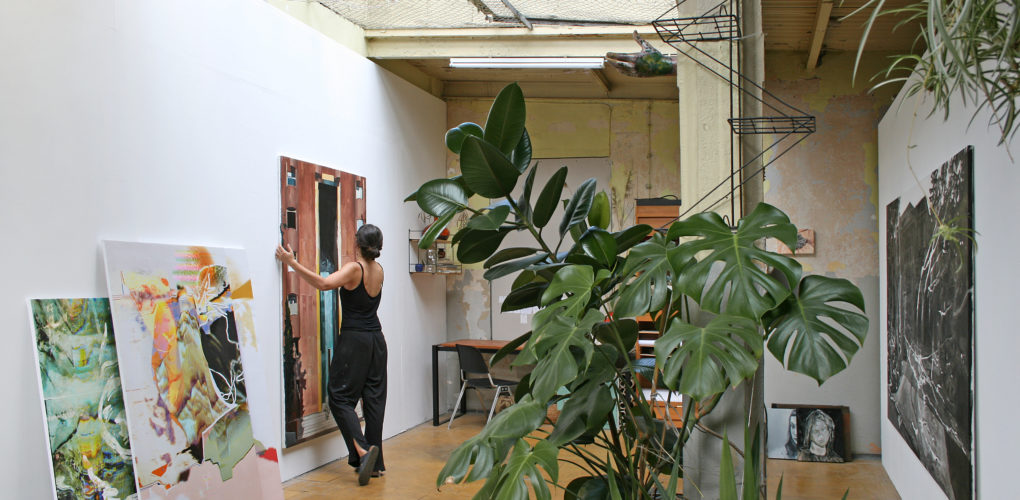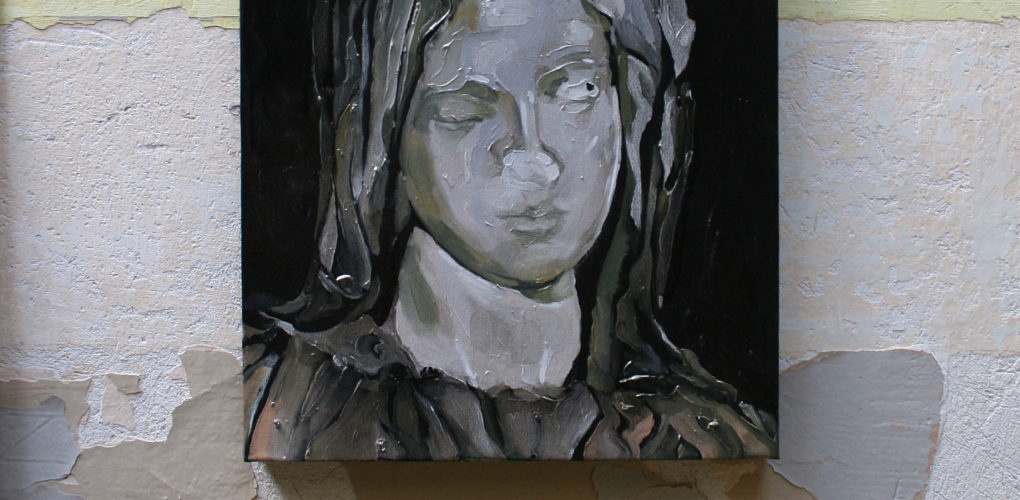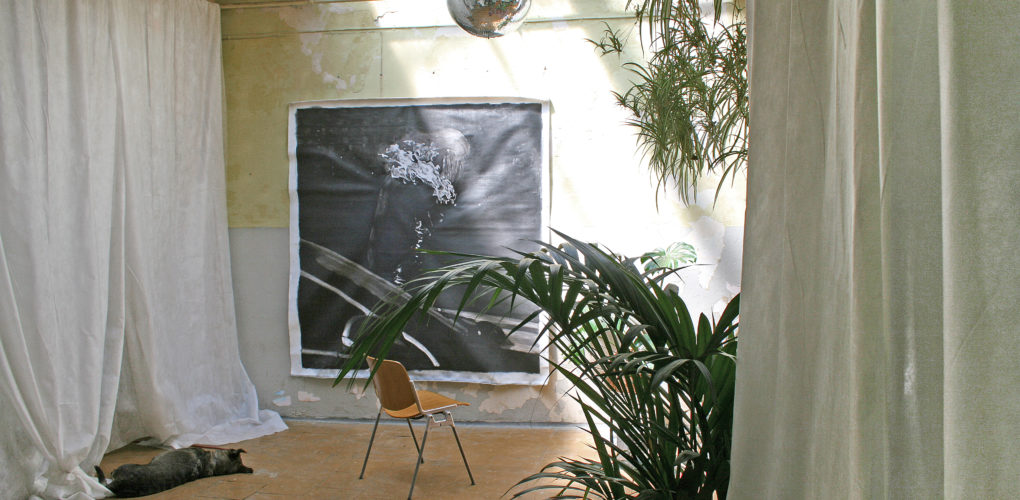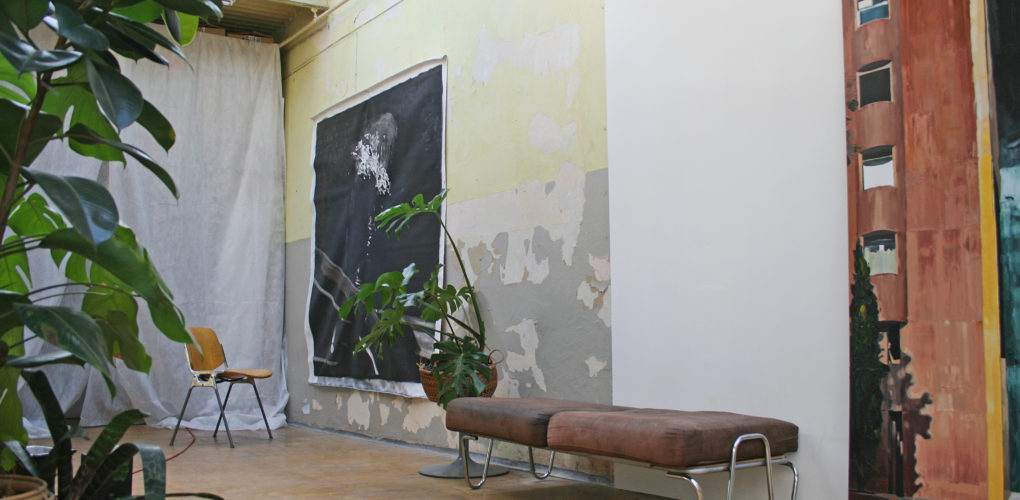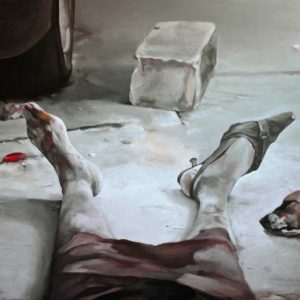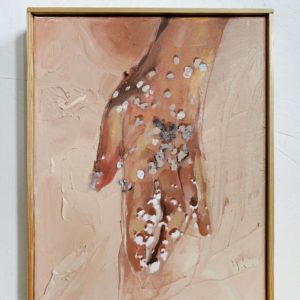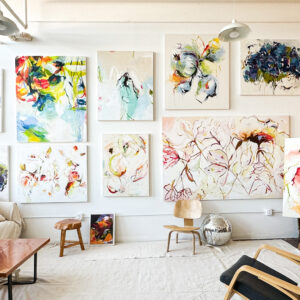One to Watch
 Andreea Anghel is Not Afraid of Challenging Complex Ideologies
Andreea Anghel is Not Afraid of Challenging Complex Ideologies
For Andreea Anghel, the best part of being an artist is the solitude and the creative freedom that comes with it. She explores themes of feminism, society in the digital age, communication, and alienation. As a Romanian artist living in Poland, she is influenced in part by her own experiences and embraces a feeling of unbelonging. Andreea works with a variety of mediums, ranging from painting and drawing to installation and video art.
Andreea has a BA in Visual Arts from the University of Art and Design Cluj-Napoca, Romania and is an MA candidate in Experimental Printmaking at the Academy of Fine Arts E. Gepper Wroclaw, Poland. She is the recipient of Plymouth Contemporary’s 2017 New Artist Award, and was shortlisted for the 2016 edition of the Teodor Moraru Grant. She has exhibited her works across Europe in countries including Romania, Poland, Germany, Italy, and Turkey.
What are the major themes you pursue in your work?
Well, there are so many ins-and-outs to what I’m interested in that giving examples tends to be reductive. For example, I can’t call my art as simply feminist when I’m not the kind of person who’ll publicly stick by a single idea, since people tend to be more complex and sometimes have beliefs which ideologically are opposed. I’m one of those people.
Also, another underlying theme would be society in the age of social media and surveillance from the angle of a hermit who reads all day about everything and at the same time is never bothered to downloads apps such as Twitter or Snapchat and only posts something on Facebook just to remind people that I’m still alive and kicking. The fact that I’ve been living in a foreign country, which feels sufficiently familiar to me to not have to culturally adapt is another (I am Romanian and living in Poland), although it’s been a rather intriguing thing to experience a right-wing government embracing religion to the extreme when you yourself are at that point when you literally don’t have any kind of reaction to any form of organized or disorganized spirituality. Alienation, embracing the fact that I do not possess any kind of sentiment of belonging to a nationality (this has been going on for as long as I can remember), and a general pursuit of knowledge and experience, as well as ways of communication, are contributors to my current view of art.
How did you first get interested in your medium, and what draws you to it specifically?
It’s rather hard for me to answer that, mainly because my body of work is not limited to what I choose to share with the Saatchi Art community. I do not have a predilection for mediums or techniques, as they vary from traditional mediums such as drawing, painting, and sculpture to video art, installations, neons as well as large-scale site-specific works. The works shared through the Saatchi Art platform are mainly more traditionally oriented, and by that I mean that it is a way for me to keep in touch with my collector base who cannot own site-specific works or prefers something easy to showcase in their homes as opposed to post-internet ready-mades, for example. So if we’re to refer mostly to this side of my work, the interest stems from age 4-5, when I was drawing on anything I could get my hands on. This initial interest, however, became thoroughly watered down thanks to a rather negative overall experience during my first three years of university with some of my instructors, which made me realize that art to me can be more than just painting and drawing.
How has your style and practice changed over the years?
I would say that it keeps changing faster than I notice it. The easiest way to see this is by the response to it: your public usually expects to know more or less which direction you’re going, so when your art is more of a chameleon you’ll get the cold shoulder treatment all the time until it’s established that it’s just your style to not have a style.
Can you walk us through your process? Do you begin with a sketch, or do you just jump in? How long do you spend on one work? How do you know when it is finished?
My process is a bit different from most, which also makes it a bit problematic: whenever I get an idea for a work, it’s usually an image of the final thing. That means that the entire process involves a struggle to bring that image as close as possible to reality, so the creative part itself is more on the technical side as opposed to emotional. That also makes it easy to decide when the work’s done.
What are some of your favorite experiences as an artist?
The best part, which for me was hard to acknowledge and accept, is solitude. It gives you time to think as well as freedom to do what you wish without pressure from anyone. You also realize that mass producing everything comes partly as an effect of belonging to a group or scene, which is something that does not function in the long run. That’s why it’s okay to have days when you only work 1-2 hours and days when you pull all-nighters as opposed to robotically forcing yourself to “create.”
Who are your favorite writers?
Slavoj Žižek, Mark Fisher, Kafka, and Hito Steyerl are the first to come to mind.
